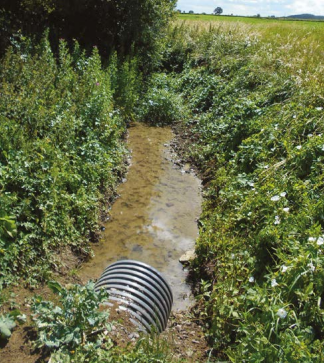- Home
- Knowledge library
- Clear ditches and outfalls for early turnout next spring
Clear ditches and outfalls for early turnout next spring
A good drainage scheme installed over 30 years ago, on what became a 64 ha grazing platform, allowed Cheshire farmer, Phil Asbury, to turn cows out in February.
Phil has learned that the key to keeping a long grazing season (stock can stay out until late November) and help heavy land to dry out quicker, is regular maintenance of ditches and outfalls.
Phil said:
“Normally, low maintenance involves a mini digger for a couple of days, or a spade for a couple of hours,” explains Phil. “We make sure that outfalls and ditches are clear in spring and in autumn, leaving them clear for winter. There is a bit of jetting and the odd wet hole to sort out. This year, after the very wet winter, we had to do more maintenance than usual, including new drains.”
Phil had tried rodding and jetting to clear what he thought were blocked drains. However, in spring he reckons almost half an acre of grazing was still underwater. Cows were wading through it, paddling around it creating a mess, and coming in for milking dirty. Phil was also concerned about creating habitats for fluke snails and other health issues, so he decided to dig down. It was then he realised that some of the original drains had dropped as the ground had settled in the last 3–5 years due to subsidence from historical wild brine pumping.
“We discovered that there was no longer a fall which is why the water wasn’t moving away. We laid new drains alongside – not big lengths, from 50 m to 200-300 m maximum,” he says, adding that grazing was reclaimed, cows became clean again and fields dried out faster."
For more information see AHDB Field Drainage Guide


